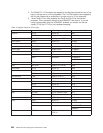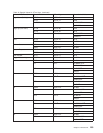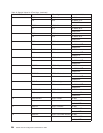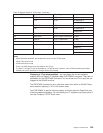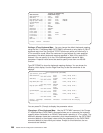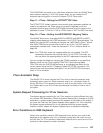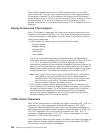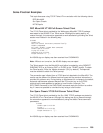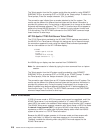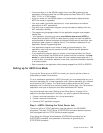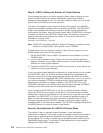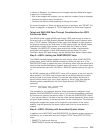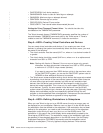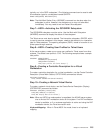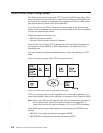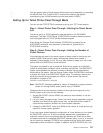
The Telnet session from the Sun system could either be ended by using SIGNOFF
ENDCNN(*YES) or by entering QUIT or CLOSE at the
Telnet
prompt. To obtain the
Telnet prompt, Enter the ’escape character’ (Ctrl-] by default).
The connection was initiated from a console attached to the Sun system. The
results may be different for different terminal types and the above information is
provided for guidance only. During testing a requirement for a change to the default
keyboard map became apparent. The F11 and F12 function keys did not appear to
perform the normal AS/400 functions. (F11 resulted in a print screen function and
F12 did nothing.) The SETVTMAP command or the CHGVTMAP command maps
these functions to other keys.
HP 705 Apollo VT100 Full-Screen Telnet Client
The VT100 Telnet client provided by the HP UNIX TCP/IP package was tested to
the AS/400 VTxxx Telnet server. Although this testing was by no means thorough,
the connection appeared to work using the default Telnet command parameters
from an
xterm
session on the HP X Window display:
# TELNET
TELNET> open 9.4.73.251
Trying.....
Connected to 9.4.73.251
Escape character is '|]'.
An AS/400 sign-on display was then received from SYSNAM123.
Note: An
xterm
session is initiated by typing the
xterm
command from an
hpterm
session.
The Telnet session from the HP system could be ended by using SIGNOFF
ENDCNN(*YES) or by entering QUIT or CLOSE at the
TELNET
prompt. To obtain
the Telnet prompt, Enter the ’escape character’ (Ctrl-] by default).
The connection was initiated from an HP X-station attached to the HP system. The
results may be different for different terminal types and the previous information is
provided for guidance only. During the testing a requirement for a change to the
default keyboard map became apparent because the HP X-station appeared to
have function keys F1 to F8 only. The SETVTMAP command or the CHGVTMAP
command maps these functions to other keys.
ASCII Line Mode
If 5250 full-screen mode or 3270 full-screen mode cannot be negotiated, and if the
AS/400 Telnet server is not configured to default to VT mode, ASCII line mode is
used. ASCII line mode is the standard Telnet network virtual terminal (NVT) support.
The AS/400 Telnet server supports interaction with Telnet clients in ASCII line mode.
A network virtual terminal (NVT) is a type of AS/400 virtual display station that
represents an ASCII line-mode type of physical display station when the AS/400
system is the server in a TCP/IP Telnet connection.
Because the AS/400 system operates in full-screen mode and has screens with
many input fields, it is difficult to map these screens to a line mode device.
Therefore, consider the following when using ASCII line mode support for the
AS/400 Telnet server:
210 OS/400 TCP/IP Configuration and Reference V4R4



